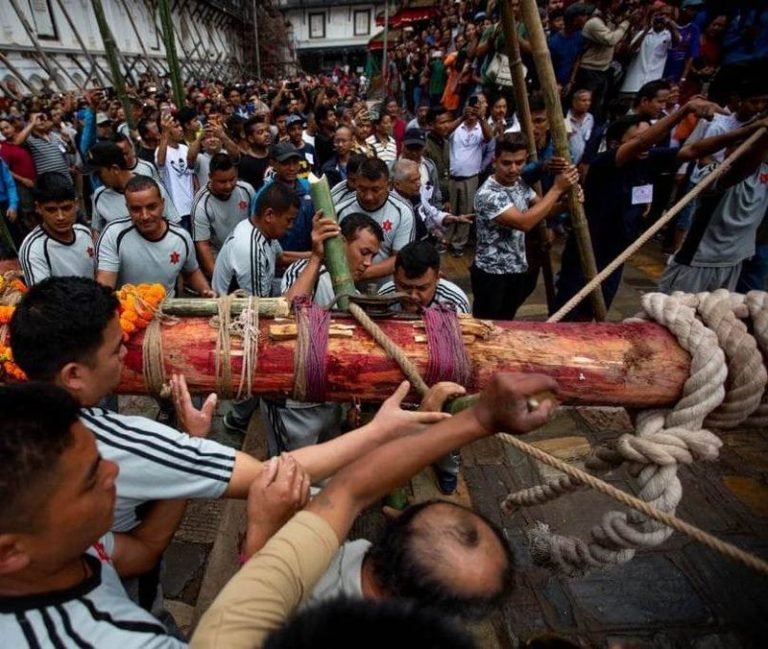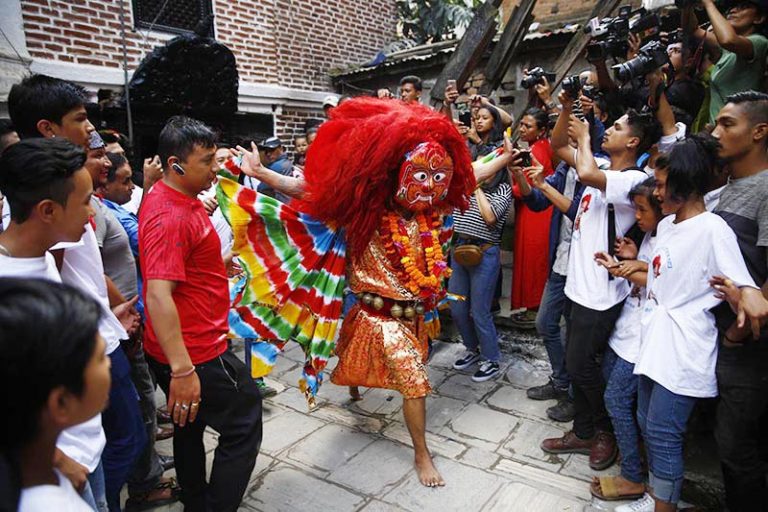Newars are ethnic community representing 5% of the Nepali population. They are historically known as inhabitants of the Kathmandu valley. Newars created the historic heritage and culture of Kathmandu. Though they are ethnic minority, because of their presence in Kathmandu valley, their cultural influence is significant. Newars are descendants of indo-aryan and Tibeto-Burman ethnicities and practice Hinduism and Buddhism. They speak Newari language also known as Nepal Bhasa. Within Newars there are various threads of caste and religious assortment. Today Newars are diverse group of people that have lived in Nepal Kastamandap since prehistoric times. Newars are very proud of their cultures and traditions. They often consider themselves as guardians of “the religion, culture and civilization of Nepal”. Because of their influence, their traditions, architectural building, arts & crafts, and food are showcased as the main cultures of Nepal. This is why Newars are regarded as one of the main contributors to Nepal’s culture, art and literature, trade and cuisine.


As Kathmandu valley is the primary habitat of Newars, the three main cities of Kathmandu valleys: Patan, Bhaktapur, and Kathmandu city, have distinction in terms of Newari inhabitants of the place. Patan is mostly Buddhist, Bhaktapur is majority Hindu and Kathmandu City is mix of both. For about a thousand years the Newar civilization in central Nepal preserved a microcosm of classical North Indian culture while elements of Buddhism thrived harmoniously within. The early Newari civilizations may date back to 7th century when Kirati tribe conquered the Kathmandu valley. Since then, exposure to Kirati and Licchavis ruling influenced Newari culture and their traditions.
Newari religion is mix of Mahayana Buddhism and Hinduism. Therefore Newars believe Buddha as reincarnation of Lord Vishnu. They worship both Hindu and Buddha temples. The co-existence of Hindu gods and buddha stupas in Kathmandu valley show the possibility where harmony can be created between two religions. Swayambhunath stupa is an important Buddhist shrine and Hindu goddess Harati mata temple next to Stupa show the religious harmony.

Did you know Nepali spirit (रक्सी) ranked 41 best spirit in the world? Read more on Wikipedia.
Newari holidays are vibrant and exhibits its complex traditions. They have many Jatras through which century old traditions have been preserved and passed down to generations. Few examples of them are Indra Jatra, Macchindra Rath Jatra, Bisket Jatra, Gai Jatra etc. There are also major festivals where family gather to share feast and do religious rituals together. Mohani (Dashain), Swanti (Tihar), Holi, Paach Chare are major festivals for Newars.
Newari food has been regarded as one of the tastiest cuisines of Nepal. Newari cuisine are often showcased as taste of Nepal. Buffalo is primary meat used by Newari. Buffalo meat is used to make several varieties of dishes such as Mo:Mo:, Chowaila, Taakhala, Dyakula, Bhuttaan etc. Newars are also known for preparing good rice beers and rice spirit (रक्सी or Aeyla). There are also sweet treats such as Yomari which is eaten during Yomari punhi (a full moon day in December), Steamed confection of rice flour dough filled with brown sugar cane and sesame seeds.
Equally, Newari cultural costumes are quite popular. Hakupatasi, Makasi, Jyapu Sikha, Chatti, etc show the beautiful culture of Newars in a unique way. Specially Hakupatasi which is red saree bordered with red color is an iconic image of Newari women. Newars are also well known for their art and craft. Their influence in temples can be seen through out the country. Newar historically used to engage in crafts based on their caste and location. For example, Newars in Patan are known for their metal work and Thangkas.
Newars also has many important traditions and occasions. One fascinating tradition is Kumari or living goddess. This tradition has been kept alive for centuries where family nominate or offer their prepubescent daughters to spend their childhood in isolation in the form of goddess Durga. After her first menstruation it is believed the goddess vacates the humanly form and new Kumari selection process is started again.
The Newari culture and their traditions are so vast, and it has been shaped by years of exposures with other ethnic communities. The culture has its own value and importance similarly to other ethnic communities. One thing that stands out about the diversity in Nepal is the harmonious co-existence of various ethnic communities without deadly and continuous conflicts. It stands true when it is said, “सयथरि बाजा एउतै ताल”.






